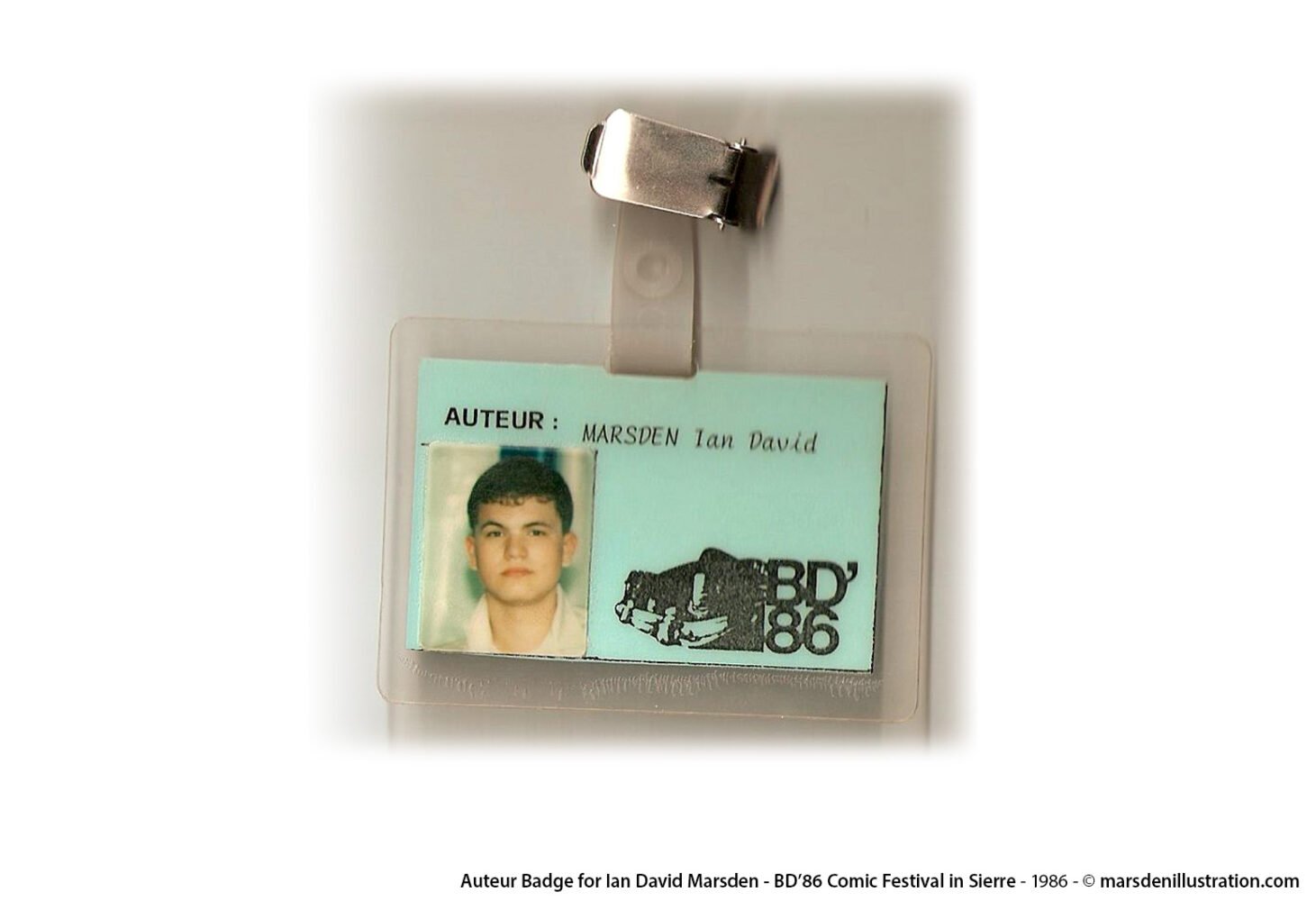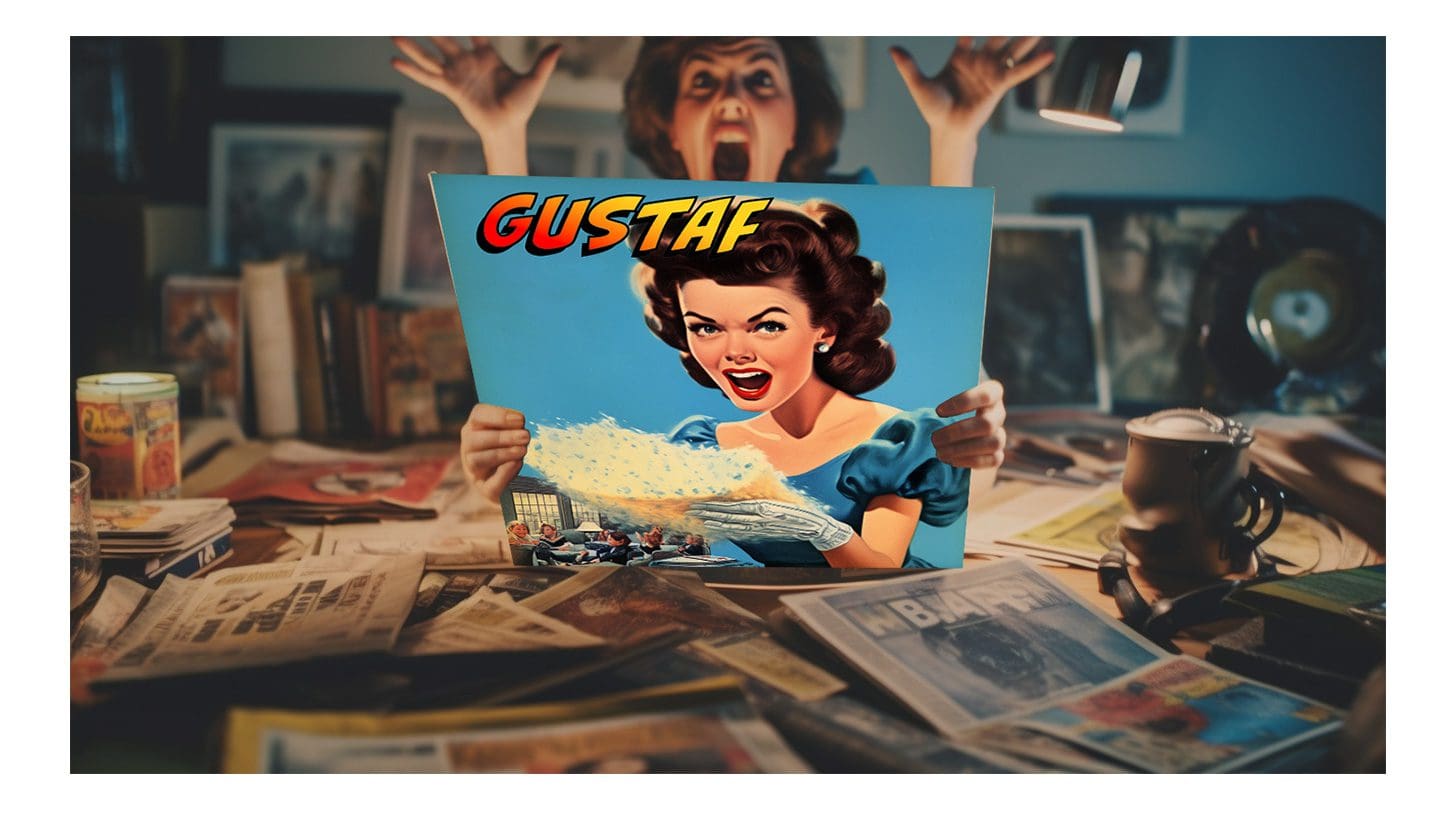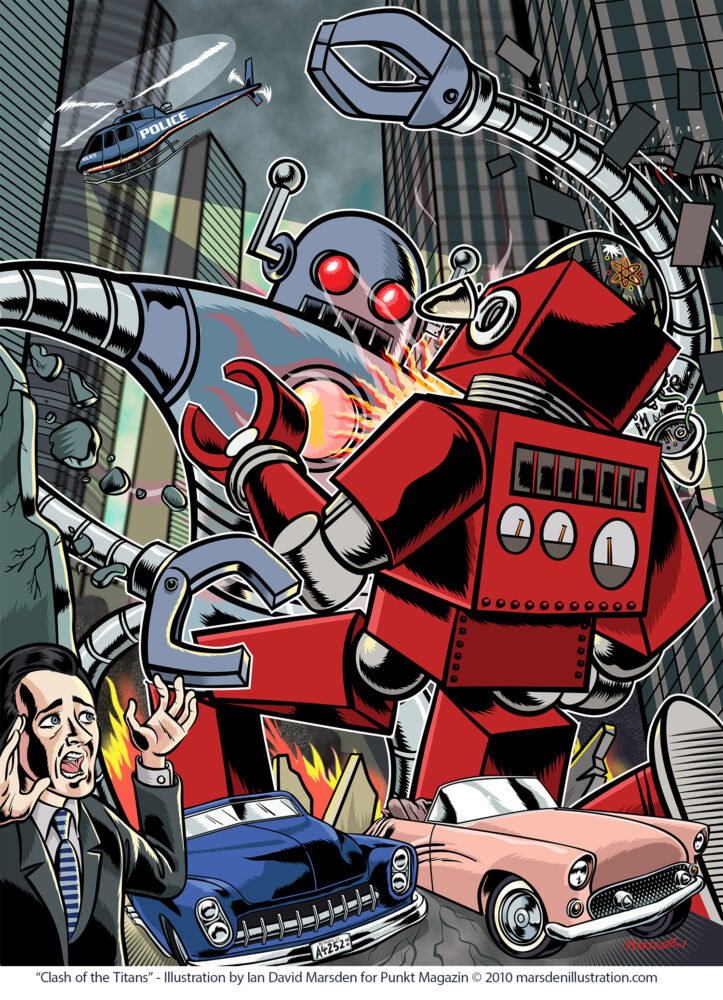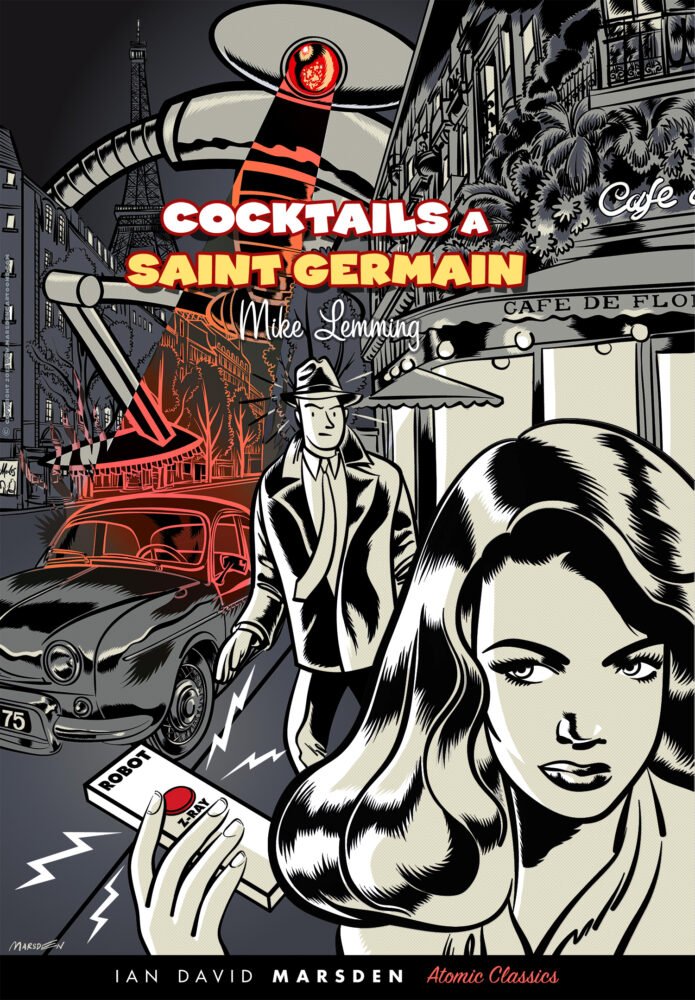
Is the technological singularity just around the corner?
https://en.wikipedia.org/wiki/Technological_singularity
This is not an anti-AI post. It’s remarkable to see how far artificial intelligence (AI) has come, to the point where it can now compete with human abilities. I stare in marvel (and horror) at the current generation of AI generated images.
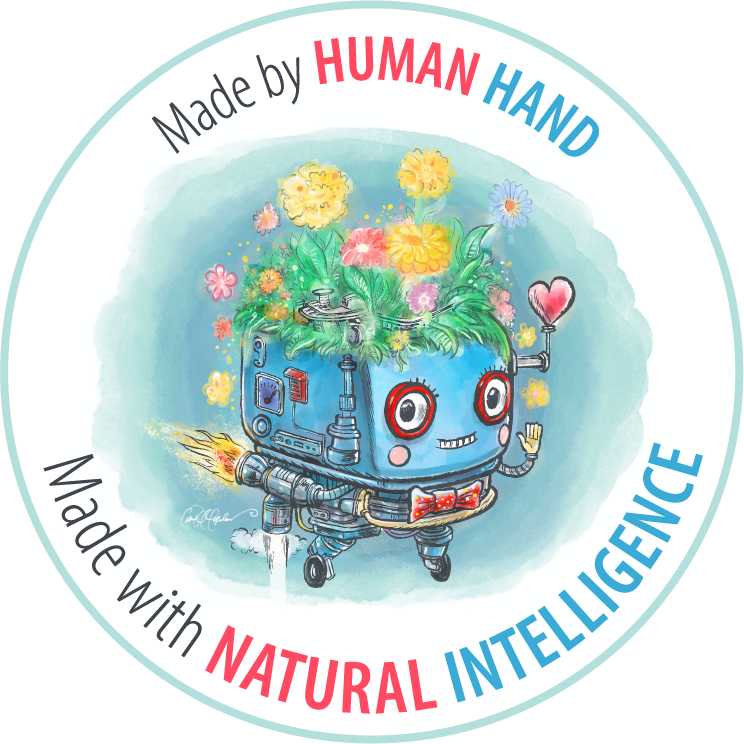
Maybe the above logo will become the art equivalent of the BIO labels at grocery stores
I am not someone who shies away from new tools or techniques, nor am I a technophobe. As someone who has been an avid fan and user of computers since childhood, I have experienced the evolution of technology firsthand. It always seemed inevitable that this day would arrive at some point, I think what is most surprising is how rapidly it is suddenly advancing. It is difficult for us to understand, because the human brain is not wired for exponential growth. We simply can not understand and imagine it.

An interesting way to demonstrate the power of exponential growth is through a thought experiment presented in the book “Abundance – The Future Is Better Than You Think” by Steven Kotler. The experiment involves taking 30 exponential steps from your front door, with each step doubling in size. While taking 30 linear steps may seem simple and predictable, taking exponential steps can lead to a mind-boggling outcome.
If you took 30 exponential steps, the results would be astonishing. You’d end up going around the Earth 26 times!
During my childhood, my friends and I used to purchase computer magazines that contained pages of magical codes. We would spend hours typing endless rows of letters and numbers into early computers and record the code on audio cassettes. If we had typed the codes accurately without any mistakes, we were rewarded with some rudimentary playable games like Space Invaders. If you made a mistake while typing the codes, you would get: well nothing. It was nearly impossible to identify the exact location of the error or typo so you had to start all over again.
My brother and I were some of the first kids in Switzerland to have an Atari 2600 console, which we could play for hours on end. We learned every click and joystick combination and got the most out of even ludicrously inane games like for example the Atari “Superman” game.

Yes that game really sucked as badly as the video would have you believe.
Not as bad as the E.T. game though.
As technology evolved, I went along, including using the Commodore 64, the Amiga, and a DOS 386 computer. I paid a fortune for 1MB of memory and a 40 MB hard drive and another fortune for Corel Ventura desktop publishing in the late eighties and I also got a cool little hand-held scanner as a gift from my brother, which really didn’t serve much purpose streamlining my work, but was amazing at the time. I could see strips of my scanned drawings on the screen! After that I began my long love affair with Macs, (although I also began a hate affair with bomb notifications, frozen screens, and turning on and off extensions). Anyway, I hope that this brief account of my digital “street cred” will demonstrate that I have no apprehensions about technology itself and I have put in the time.
I have followed a similar step-by-step evolution in my professional life. Presently, I am fully immersed in the latest advancements of technology, utilizing devices such as macs, iPad Pros, Wacom Cintiq pen displays, iPhone Pros, a Garmin on my wrist, and Waze in my car. Despite my thoroughly digital persona, I have not abandoned my traditional habits, including my love for reading and enjoying the scent of “real” books and newspapers, as well as my fondness for working with paper, inks, and watercolors.
I am exactly of the age where I was probably the last generation of graphic designers and illustrators who learned the trade entirely traditionally. This involved sending original artwork on large illustration board through the mail or with FedEx and DHL, often resulting in damaged (soaked, folded in half, why not a bite taken out of it for good measure?) or lost artwork with no backups or digital scans available because they did NOT EXIST. We never got it, send it again! In those days, screenshots and snapshots were not an option due to the lack of internet, e-mail and digital cameras. If fortunate, you had kept a vellum rough draft of the artwork, to use as a starting point when beginning anew from scratch.
I won’t go into the fun of airbrush compressors or cleaning out same airbrushes. Or the joyful giddyness after a few hours of inhaling edding marker fumes.
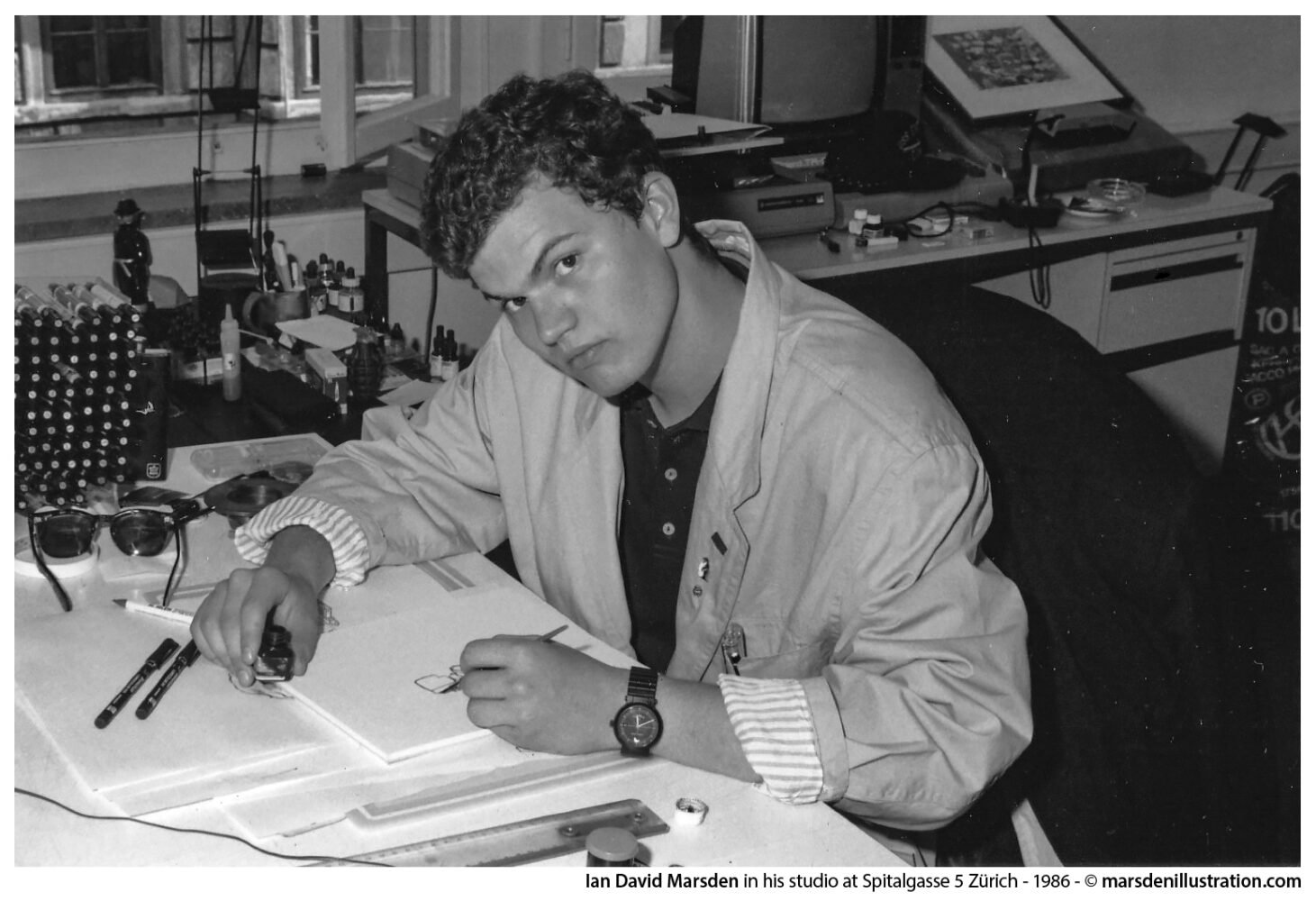
in my studio in 1986 – old Computers and typewriter in the background
Typesetting was a painstaking process that involved selecting typefaces from books, measuring the correct leading and kerning and ordering printed type from specialized printers, then cutting the text (or your fingers) by hand with scalpels, mounting it on graphic board with 3M spray glue or wax, and using a rubber roller to flatten it down. Sometimes for Layouts you could use Letraset rubbing sheets. The completed artwork was then taken to a dedicated room in the agency with repro cameras where you sized, photographed and developed the result on giant sheets of photo paper. Needless to say your eyes were never insulted during these heady days by accidentally stumbling across Comic Sans.
I was thrilled to embrace the first scanners, Wacom tablets, and later cintiq displays, along with Photoshop. Photoshop which lacked layers (until version 3.0 I believe). Even the significant rendering and file-saving times were not a problem. The files were so large that 100 MB disks and Iomega ZIP drives were required for storage!
So, we have ascertained: I love technology and gadgets, and I am always an early adopter. I guess in a way I was always looking forward to effective and high-performance AI, which seemed like a dream at the time. Longing for the futuristic world depicted in cartoons and movies I had watched since our childhood, where we could zoom in and enhance pictures,then “track right and go left” like in Blade Runner. And let’s not forget the flying cars – I wanted those too.
AI could replace equivalent of 300 million jobs – report (BBC, March 28 2023)
I guess I assumed functional AI would arrive at some point in my lifetime. Just dictate all the repetitive tasks into your earphone and have a cup of coffee. Then step into your studio and just do the things that really require your attention, your eye, your creativity, your talent, your experience, your years of accumulated know-how. After all, these invested years and past projects have made you a master of your craft. Best to just focus on what you do best and what you enjoy. You’ve earned it. ☺️

Ia3Dav4dMorsdex923 in his studio at Fleetoquark [He] 2s²2p¹
Let’s hope we can all get along.
Imagine my amazement a few weeks ago when I discovered that that day was here, and that we had skipped a step. In a few years we went from no AI to an AI that could merely create images of amateurish looking blobs with 36 fingers to an AI that can create a highly detailed, photographically realistic (or illustrated in various styles copied from existing artists and techniques) image in seconds. (There’s that ‘exponential’ thing, I was talking about at the beginning of this little essay). It even gives you four different versions of the image to choose from each time. This is something that some of my clients would probably love: “Can you draw it four different ways please, so we can decide after seeing it?” (Just kidding, really nice people, my clients. Love you guys!)
Not only can AI create images, but it can also write the script for your comic book, graphic novel, children’s book, Netflix series, or feature film. And guess what? It can even generate soundtracks for you, featuring any artists, any at all. Recently new tracks by Drake, Elvis, or the Beatles have surfaced. Some think they are better than the orginals. (Google and you shall find)
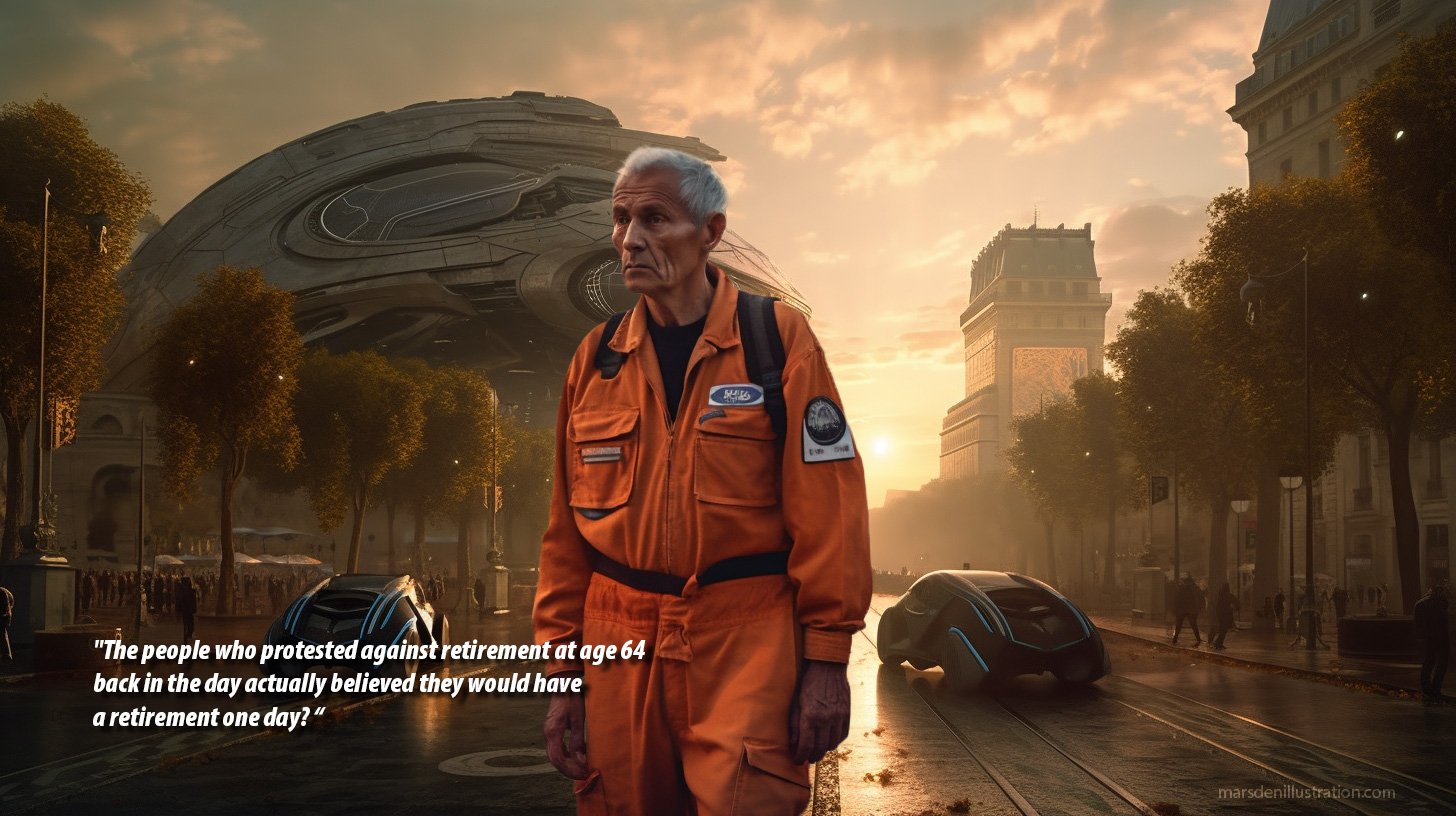
My first attempt to test the efficacy of the Midjourney AI.
At the time of writing there is no Copyright on AI generated images.
There’s no need to be able to draw, learn an instrument, study or even write or spell correctly. Just type in a few jumbled phrases, and it will do it all for you. It will make you a highly polished image. There is still something slightly strange about these images. You can tell that something is off. But I don’t think this will bother many users (or viewers) and this will undoubtedly be corrected in the next iteration of the AI. This is not all though. It can write you a 300 or 600 page Stephen King novel about a murderous slice of Roquefort cheese called “Gustaf”*. (Please ask it to do so directly yourself if you want to read it).
* Spoiler alert: The killer was hiding in your fridge the whole time!
It’s not even like autotune, which just made it possible for people with no musical ear or voices to sing correctly. With AI, there’s no need to correct anything; it just sings it for you.
Acting or modeling? No need. Artificial models and actors are here. Stylists and hairdressers? Nope.
“Make hair blond and a bit shorter” – not just instructions for photographers or cameramen. From voiceovers to writing texts, making Powerpoint presentations, coding games and apps, writing wordpress websites, thinking of media campaigns, coming up with ideas, to no longer needing human lawyers to read or write contracts or human doctors to analyze Xrays or scientists to perform scientific calculations, the use of AI goes way beyond the creative industry.
Let’s be super-optimistic for a moment (as I generally am) and assume Skynet never becomes self-aware and AI does NOT want to eradicate us, as we’re just consumers of resources and waste producers with intellectual abilities less than that of an ant. We might still be needed as consumers of AI-generated products, only if we assume AI is even interested in such trivial and mundane pursuits as “selling things” and “making profits”.
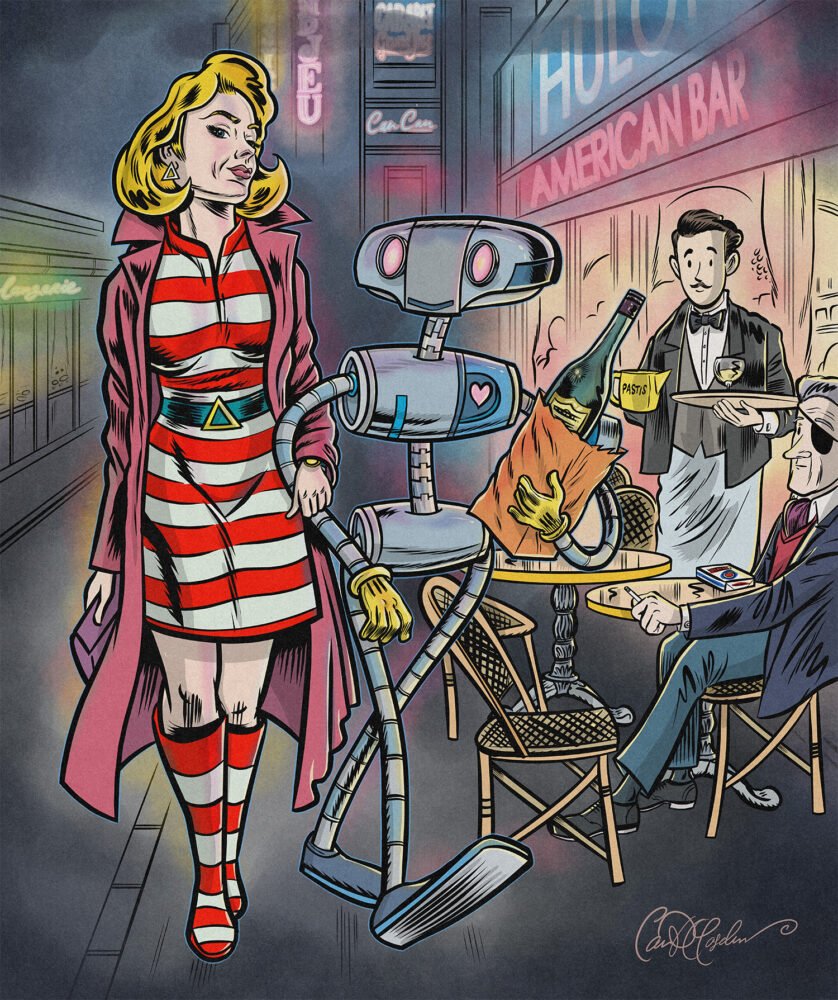
Not AI generated but the robot still gets the girl…
The AI is now writing its next version, which used to take years, then months, and now weeks. Soon, there will be unlimited new versions of the AI being produced every day and every minute.
Since in all likelihood pretty much everybody will become jobless in mere years, a regular and unconditional universal basic income will be necessary to keep humans afloat, pay the rent and allow us to purchase the electronic benefits and advances generated by AI. But who will pay it? And how? Another thing that is highly unusual about this coming change is that not only the workers in the cubicle offices will be replaced, but managers, directors and CEOs are just as redundant and can just as easily be superceded by the much more efficient and far less costly AI.
What’s the endgame? When does it end? How does it end? What to do? Best case scenario, we have endless free time, unlimited resources, and access to advanced technology that can solve any problem and cure any illness. Sweet!
But what about the worst-case scenarios?
I hope that many of us will continue to value and appreciate the beauty and authenticity of handmade crafts and art, even if and when the AI is capable of perfectly mimicking any art style and possibly mastering a dry humor sense of humor to boot. Since entirely AI generated images and art can not be copyrighted, they can also not really be sold. It is just a matter of time before very simple apps will allow virtyally anybody to create such products on the fly – destroying the hopes of those who thought they can market themselves as “AI whisperers” or as the Hemingway of prompt writers.
Personally, I take more and more pleasure with putting pen and ink to paper again, like before any of this ever happened. The original art can be framed and enjoyed. You can feel the paper and see the little splashes and corrections in white-out where the artist made a mistake or the nib got caught. I think there will always be a future for such art. Real art. Human art. Just like there is for vinyl and “real” photography on film. Maybe this is the dawn of a really fun new “Renaissance” for myself and many other people in various fields.
I think we can all agree, though: we are living in very interesting times.
Ian David Marsden, March 2023
PS: I admit that I also wrote this as a sort of backup insurance policy in the hope if the AI DOES become self-aware after all, it will read this blog post and see that I have always loved robots (based on the various robot illustrations on this page), and will perhaps decide to show mercy and not hunt me down in the cave where my girlfriend and I will be hiding, probably spending our days foraging for tubers with our noses.
AI, automation, creativity, graphic design, illustration, traditional methods, technology, digital art, graphic tools, graphic board, scanners, Wacom tablets, Cintiq displays, Photoshop, layers, rendering, saving time, ZIP drive, universal income, future of work.
#AI #automation #creativity #graphicdesign #illustration #technology #digitalart #traditionalmethods #graphicboard #scanners #Wacomtablets #Cintiqdisplays #Photoshop #layers #rendering #savingtime #ZIPdrive #universalincome #futureofwork #handcrafted

